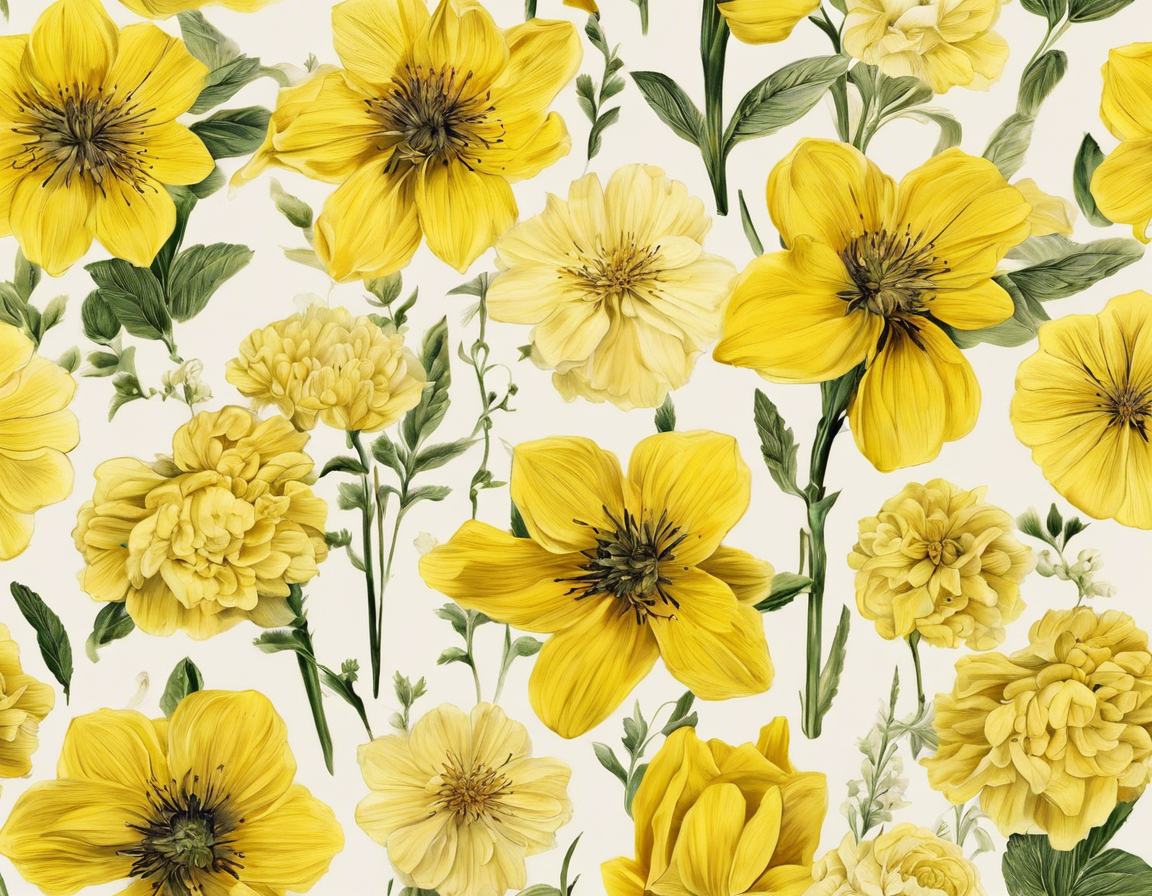
Vibrant Yellow Flower Names for Your Garden
Are you looking to add a pop of color to your garden? Consider planting vibrant yellow flowers to brighten up your outdoor space! Yellow flowers are not only visually appealing but also symbolize happiness, friendship, and positivity. In this comprehensive guide, we will explore various types of yellow flowers that you can grow in your garden, along with tips on how to care for them and incorporate them into your landscaping design.
Types of Yellow Flowers
1. Sunflowers
Sunflowers are iconic for their large, bright yellow blooms and dark centers. These cheerful flowers can grow quite tall, making them a striking focal point in any garden.
2. Daffodils
Daffodils, also known as narcissus, are early spring bloomers that feature trumpet-shaped yellow flowers. They are low-maintenance and can naturalize over time, creating a stunning display year after year.
3. Marigolds
Marigolds are popular annual flowers that come in various shades of yellow and orange. They are known for their ability to repel pests, making them a practical choice for vegetable gardens.
4. Black-Eyed Susans
Black-eyed Susans are North American wildflowers with yellow daisy-like blooms and dark centers. They are drought-tolerant and attract pollinators, making them a great addition to any garden.
5. Coreopsis
Coreopsis, also known as tickseed, is a perennial flower with bright yellow, daisy-like blooms. They are easy to grow and can bloom from spring to fall, adding long-lasting color to your garden.
6. Lilies
Lilies come in various colors, including shades of yellow. These elegant flowers are beloved for their fragrance and are perfect for adding a touch of sophistication to your garden.
Caring for Yellow Flowers
-
Sunlight: Most yellow flowers thrive in full sun, so make sure to plant them in a sunny spot in your garden.
-
Watering: It’s essential to water your yellow flowers regularly, especially during hot, dry periods. However, be cautious not to overwater, as this can lead to root rot.
-
Soil: Yellow flowers typically prefer well-draining soil. If your soil is heavy or clay-like, amend it with organic matter to improve drainage.
-
Fertilizing: Use a balanced fertilizer to promote healthy growth and vibrant blooms. Follow the instructions on the fertilizer package for best results.
-
Deadheading: Regular deadheading, or removing spent blooms, can encourage prolonged blooming in many yellow flowers.
Design Tips for Incorporating Yellow Flowers
-
Contrast: Plant yellow flowers against a backdrop of dark green foliage or purple flowers to create a striking contrast.
-
Mass Planting: Create a bold statement by mass planting yellow flowers in clusters or rows for a vibrant display.
-
Container Gardens: Yellow flowers thrive in containers, making them perfect for patios, balconies, or small outdoor spaces.
-
Complementary Colors: Pair yellow flowers with complementary colors like purple, blue, or pink for a visually pleasing combination.
Frequently Asked Questions (FAQs)
1. Can yellow flowers grow in shade?
While most yellow flowers prefer full sun, some varieties like impatiens and begonias can tolerate partial shade.
2. How often should I water yellow flowers?
Yellow flowers should be watered deeply once or twice a week, depending on the weather conditions and soil moisture levels.
3. Do yellow flowers attract bees and butterflies?
Yes, yellow flowers are attractive to bees, butterflies, and other pollinators, making them beneficial for your garden’s ecosystem.
4. Are there any yellow flowers that bloom in the winter?
Some winter-blooming yellow flowers include winter jasmine, witch hazel, and pansies.
5. Can yellow flowers change color in different soil pH levels?
Some yellow flowers, like hydrangeas, can change color based on the acidity of the soil. Acidic soil may turn the blooms pink, while alkaline soil keeps them yellow.
